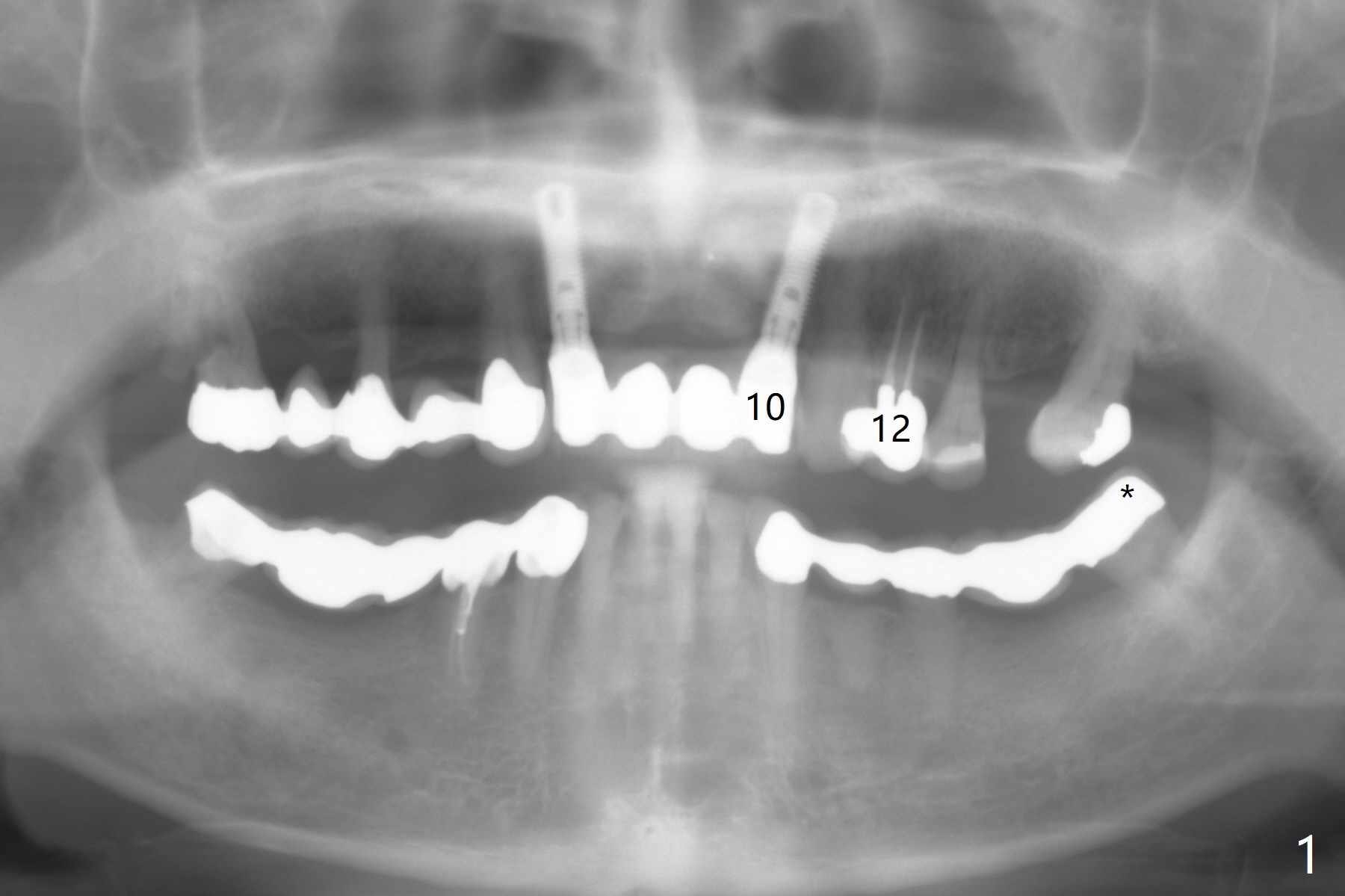
 |
A 64-year-old man has multiple restorations. The tooth #2 seems to have root resorption. The tooth #27 has recently finished RCT. It appears necessary to establish sound occlusion on the left side by placing an implant at #14. First at all, the mesially tilted tooth #15 needs to be uprighted (Fig.2). The implant crown at #10 will be used as an anterior anchorage, since the three teeth (#11-13) are usually not strong enough to distalize the 2nd molar. To prevent debracketing at #10, a diamond bur will be used to roughen the crown surface and new bonding agent is applied. The second easily debracketing spot is #12 (crown), which could be used bicuspid band. The 3rd option to reduce debracketing is not to use rectangular wire initially. When the space at #14 increases to 8 mm mesiodistally, an implant will be placed. Once the implant is osteointegrated, a band is applied. From that point on, a rectangular wire could be used. If debracketing occurs at #10, it does not matter, as the posterior anchorage has taken over. Save all of wires used initially, since wires may have to return to thinner ones when #14 band is loaded. To unlock the occlusion (to distalize #15 without interference), composite will be applied to one of FPDs on the right side. The distal marginal ridge of the tooth #18 (Fig.1 *) may need to be trimmed. 好病人?
Prevent Debracketing Next 上一例 矫正,糖尿病,种植水平 植牙,导板与正畸
Xin Wei, DDS, PhD, MS 1st edition 04/09/2018, last revision 01/03/2021